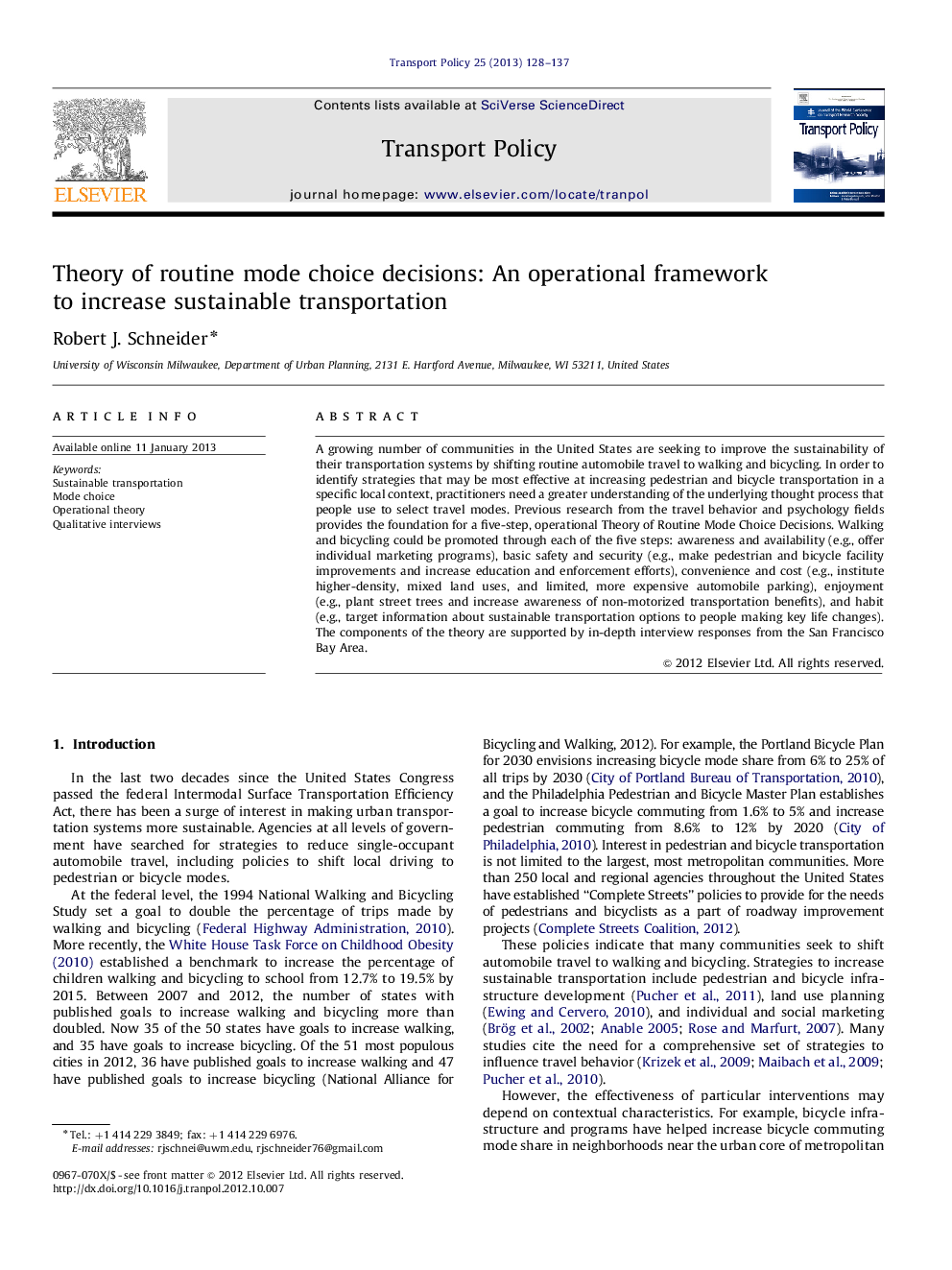| Article ID | Journal | Published Year | Pages | File Type |
|---|---|---|---|---|
| 1065014 | Transport Policy | 2013 | 10 Pages |
A growing number of communities in the United States are seeking to improve the sustainability of their transportation systems by shifting routine automobile travel to walking and bicycling. In order to identify strategies that may be most effective at increasing pedestrian and bicycle transportation in a specific local context, practitioners need a greater understanding of the underlying thought process that people use to select travel modes. Previous research from the travel behavior and psychology fields provides the foundation for a five-step, operational Theory of Routine Mode Choice Decisions. Walking and bicycling could be promoted through each of the five steps: awareness and availability (e.g., offer individual marketing programs), basic safety and security (e.g., make pedestrian and bicycle facility improvements and increase education and enforcement efforts), convenience and cost (e.g., institute higher-density, mixed land uses, and limited, more expensive automobile parking), enjoyment (e.g., plant street trees and increase awareness of non-motorized transportation benefits), and habit (e.g., target information about sustainable transportation options to people making key life changes). The components of the theory are supported by in-depth interview responses from the San Francisco Bay Area.
► Proposes an operational theory of routine mode choice decisions. ► Steps are awareness and availability, safety and security, convenience and cost, enjoyment, and habit.► Theory is supported by previous studies and interviews from San Francisco Bay Area. ► Provides framework for policies to increase sustainable transportation.
